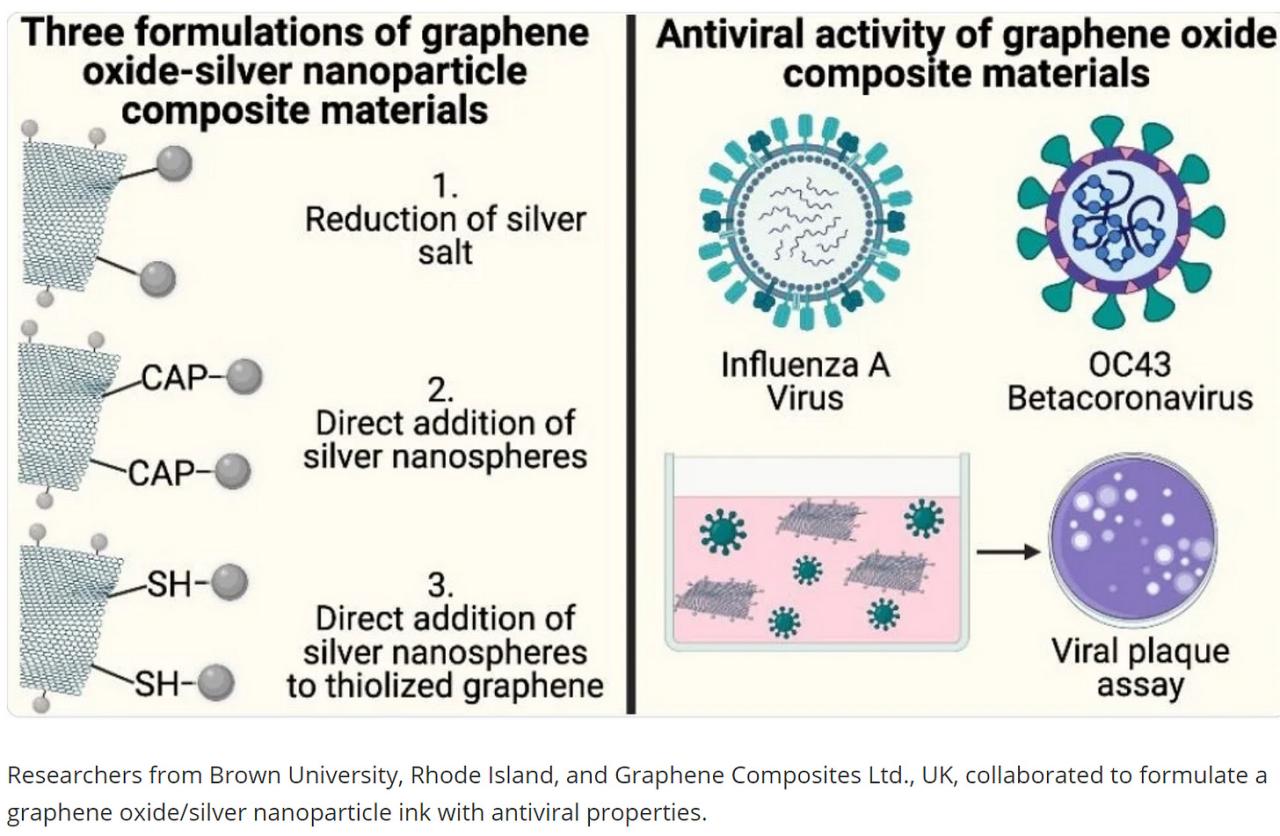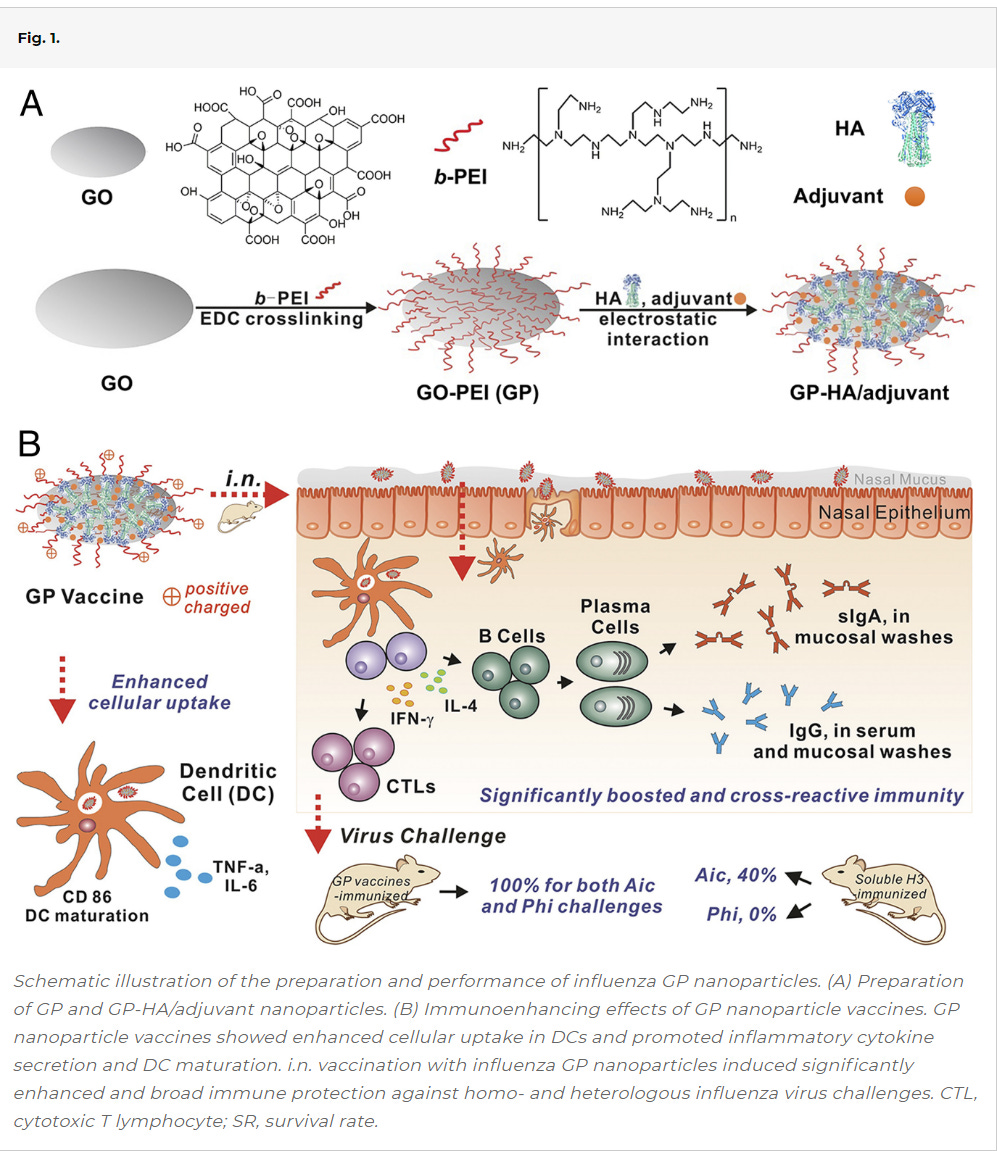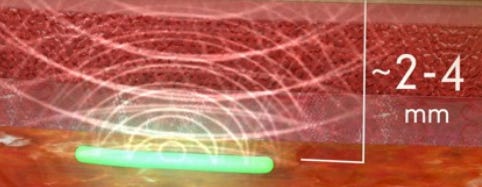GRAPHENE?
TRUST THE SCIENCE
Will vaccine companies and government agencies release the full list of ingredients of these C-19 injections?
Both they and the media tell us that the GRAFENE in these products is a “conspiracy”.
These scientific publications clearly show that graphene is used in many formulations, including C-19 injections.
https://www.sciencedirect.com/science/article/abs/pii/S1742706120303305?via%3Dihub Recent progress of graphene oxide as a potential vaccine carrier and adjuvant – PubMed (nih.gov) Epub 2020 Jun 10.
Thanks for reading OUTRAGED’s Newsletter! Subscribe for free to receive new posts and support my work.
Pledge your support
Graphene oxide (GO), widely employed for the delivery of biomolecules, excels in loading and delivering antigen and shows the potentiality of activating the immune system.
However, GO aggregates in biological liquid and induces cell death, and it also exhibits poor biosolubility and biocompatibility.
STATEMENT OF SIGNIFICANCE: Due to its unique physicochemical properties, graphene oxide is widely employed in medicine for purposes of photothermal treatment of cancer, drug delivery, antibacterial therapy, and medical imaging.
In recent years, graphene oxide (GO) nanomaterials have been widely used in biomedical fields due to their unique properties such as drug delivery [18,19], biological sensor, photodynamic therapy, cancer therapy, antibacterial therapy, and more.
GO is derived from graphite by oxidation treatment, which retains the large planar structure and high surface area while introducing hydrophilic groups such as hydroxyl, carboxyl, and epoxy groups.
Presently, GO has been reported to be used as the delivery vehicle of vaccine antigen, which delivers antigen into dendritic cells (DCs: classical professional antigen-presenting cells). Antigen-loaded GO is not only effectively internalized by DCs but also promotes the cross-presentation of antigen to CD8+T cells, which strongly contributes to the elimination of intracellular pathogens and pathogenic cells after vaccination. On the other hand, an in vitro study showed that GO can activate the immune system by increasing inflammatory factors as well as the proliferation and differentiation of lymphocytes, especially CD8+T cells.
Furthermore, GO has been shown to be cytotoxic; especially it can damage DNA, which is associated with its inherent chemical characteristics (lateral size and oxidation state),
Its extensive toxicity may also limit the clinical application such as inducing platelet depletion, hemolysis and pathological damage of lungs and liver.
However, GO and rGO have been observed to elicit many adverse effects, including hemolysis, cell apoptosis, DNA damage, reactive oxygen species formation, thrombus formation, and pathological damage of the lung and liver…
https://pubmed.ncbi.nlm.nih.gov/26814441/ Functionalized graphene oxide serves as a novel vaccine nano-adjuvant for robust stimulation of cellular immunity – PubMed (nih.gov)
In this study, we carefully engineered graphene oxide (GO) as a vaccine adjuvant for immunotherapy using urease B (Ure B) as the model antigen. Ure B is a specific antigen for Helicobacter pylori, which is a class I carcinogen for gastric cancer. Polyethylene glycol (PEG) and various types of polyethylenimine (PEI) were used as coating polymers.
Moreover, this GO-PEG-PEI can serve as an antigen carrier to effectively shuttle antigens into DCs. These two advantages enable GO-PEG-PEI to serve as a novel vaccine adjuvant.
https://www.news-medical.net/news/20210302/Graphene-oxide-silver-nanoparticles-shown-to-rapidly-neutralize-RNA-viruses.aspx Graphene oxide-silver nanoparticles shown to rapidly neutralize RNA viruses (news-medical.net)
Silver nanoparticles (AgNP) are well-established as antibacterial and antiviral agents. Another nanomaterial – graphene oxide (GO) – is also effective against microorganisms. Coupled with its high surface area, it acts as a potent ideal drug carrier. With high levels of antiviral agents, the combination with graphene oxide is found to show higher antiviral performance and reduced toxicity. (?????)
While many groups have investigated graphene oxide and silver nanoparticles, a recent study examined the antiviral properties of GO-AgNP composite materials developed by Graphene Composites as part of their patent-pending GC Ink antiviral formulations.
“Our finding that graphene oxide/silver nanoparticle ink can rapidly prevent in vitro infection with two different viruses is exciting, and suggests that the ink has the potential to be used in a variety of applications to help reduce the spread of viruses in the environment,” Dr. Meredith J. Crane, co-author of the research, published on the bioRxiv*preprint server, said.
https://www.biorxiv.org/content/10.1101/2021.02.25.432893v1 2021.02.25
Graphene oxide/silver nanoparticle ink formulations rapidly inhibit influenza A virus and OC43 coronavirus infection in vitro | bioRxiv
These materials were tested
over short time scales
for their antiviral activity against two enveloped RNA viruses, influenza A virus and OC43 coronavirus, by performing viral plaque assays after exposure of the viruses to each material. It was found that the graphene oxide – silver nanoparticle materials generated by direct addition of the silver nanospheres were able to completely inhibit plaque formation by both viruses within one minute of exposure.
https://chanzuckerberg.com/ Chan Zuckerberg Initiative – Building a Future for Everyone
About Us The Chan Zuckerberg Initiative was founded in 2015 to help solve some of society’s toughest challenges — from eradicating disease and improving education, to addressing the needs of our local communities. Our mission is to build a more inclusive, just, and healthy future for everyone.
https://chanzuckerberg.com/grants-ventures/grants/ Science, Education, Community, and Justice Grants | CZI (chanzuckerberg.com)
https://tech.chanzuckerberg.com/scitech/ Science Technology Stories & Careers – CZI Tech Hub (chanzuckerberg.com)
https://www.sciencedaily.com/releases/2021/05/210503151306.htm Intranasal influenza vaccine enhances immune response and offers broad protection — ScienceDaily
“This study gives new insights into developing high performance intranasal vaccine systems with two-dimensional sheet-like nanoparticles,” Dong said. “The graphene oxide nanoparticles have extraordinary attributes for drug delivery or vaccine development, such as the ultra-large surface area for high-density antigen loading, and the vaccine showed superior immunoenhancing properties in vitro and in vivo. The nanoplatform could be easily adapted for constructing mucosal vaccines for different respiratory pathogens.”
The results are also promising because needle-free, intranasal influenza vaccines possess superior logistical advantages over traditional injectable vaccines, such as easy administration with high acceptance for recipients and the avoidance of biohazardous waste.
The study was funded by the National Institutes of Health’s National Institute of Allergy and Infectious Diseases.
https://www.pnas.org/doi/full/10.1073/pnas.2024998118 Intranasal vaccination with influenza HA/GO-PEI nanoparticles provides immune protection against homo- and heterologous strains | PNAS
Here, we developed polyethyleneimine-functionalized two-dimensional graphene oxide nanoparticles (GP) that showed high antigen-loading capacities and superior immunoenhancing properties.
Two-dimensional (2D) graphene oxide (GO) nanoparticles have great potential as a novel vaccine platform due to their extraordinary attributes.
In this study, we functionalized GO with a cationic polymer, branched PEI, to construct GP nanoparticles and investigated their immunoenhancing effects. Positively charged nanoparticles are especially suitable for mucosal vaccination. Recent studies showed that PEI has a potent mucosal adjuvant effect.
GO (Graphene Oxide) nanoparticles are a type of 2D sheet-like nanomaterials that have demonstrated superior attributes for drug delivery, including ultra-large surface area, easy modification, and excellent physiological biocompatibility.
Safety Evaluation of GP-H3 Nanoparticles.
Mouse body weight was monitored for 7 d postvaccination. Histological examination of mouse nasal mucosa and lung tissues was performed with hematoxylin and eosin (H&E) staining 24 h and 7 d postvaccination, respectively. (!!!!!!!!!!!!!!!!!!!!!!!!!!!!!!!!!!!!!!!!!!!!)
https://www.sciencedaily.com/releases/2022/01/220128165601.htm Intranasal flu vaccine with nanoparticles offers robust protection — ScienceDaily
“Nanoparticle platforms have shown intriguing characteristics and great potentials in the development of next-generation cross-protective influenza vaccines”
https://www.sciencedaily.com/releases/2020/01/200107104909.htm Universal flu vaccine protects against 6 influenza viruses in mice — ScienceDaily
The double-layered nanoparticle vaccine contains the influenza virus proteins matrix protein 2 ectodomain (M2e) and neuraminidase (NA).
https://www.ncbi.nlm.nih.gov/pmc/articles/PMC8213470/ Synthesis and Toxicity of Graphene Oxide Nanoparticles: A Literature Review of In Vitro and In Vivo Studies – PMC (nih.gov)
In recent years, graphene has been exploited in the medical field, particularly for DNA sequencing, the development of biosensors, and cell differentiation and growth.
In addition, GO is used to administer anticancer drugs in biological cells, aptamers for ATP probing in mouse epithelial cells, and gene delivery.
As applications increase, exposure to GO increases across populations. These include exposures during nanomaterial manufacturing and biomedical treatment. GO is involved in many applications, but there is one main factor limiting “its toxicity” limiting its use. (!!!!!!!!!!!!!!!!!!!!!!!!!!!!!!!!!!!!!!!!!!!!!!!!!!!!!!!!!!!!!!!!!!!!!!!!!!!!!!!!!!!!!!!!!!!!!!!!!!!!!!!!!!!!!!!!!!!!!)
6. Toxicity of GO in Cell Models,
7. Toxicity of GO In Vivo – 7.1. Pathways of GO Entry into the Body and Biological Barriers, 7.2. Biodistribution, Biotransformation, and Excretion of GO, 7.3. Toxicity in the Respiratory System, 7.4. Toxicity in the Digestive System, 7.5. Toxicity in the Urinary System, 7.6. Toxicity in the Central Nervous System, 7.7. Toxicity in Reproductive and Development System, 7.8. Genotoxicity,
8. Toxicity Mechanisms – 8.1. Interactions of GO with Cell Membranes, 8.2. Oxidative Stress
https://www.futurity.org/intranasal-flu-vaccine-immune-systems-2559142-2/ Nasal spray flu vaccine may protect against a variety of strains – Futurity
They also created a two-dimensional nanomaterial (polyethyleneimine-functionalized graphene oxide nanoparticles) and found that it displayed potent adjuvant (immunoenhancing) effects on influenza vaccines delivered intranasally.
https://nihrecord.nih.gov/2020/09/04/anderson-explains-role-nanoparticles-vaccines Anderson Explains Role of Nanoparticles in Vaccines | NIH Record
“One of the heroes of this story is the nanoparticle,” said Anderson, professor of chemical engineering and of health sciences and technology at the MIT Koch Institute for Integrative Cancer Research.
Already, a single-particle Ebola vaccine has been made whose payload targets three strains of Ebola, Anderson noted.
https://www.nature.com/articles/s41428-020-0350-9 Graphene oxide-incorporated hydrogels for biomedical applications | Polymer Journal (nature.com)
Graphene and graphene derivatives (e.g., graphene oxide (GO)) have been incorporated into hydrogels to improve the properties (e.g., mechanical strength) of conventional hydrogels and/or develop new functions (e.g., electrical conductivity and drug loading/delivery). Unique molecular interactions between graphene derivatives and various small or macromolecules enable the fabrication of various functional hydrogels appropriate for different biomedical applications.
https://pubmed.ncbi.nlm.nih.gov/30816371/ Graphene hybrid materials? The role of graphene materials in the final structure of hydrogels – PubMed (nih.gov)
Graphene (G), graphene oxide (GO) and graphene quantum dots (GQDs) have been introduced into a three-dimensional polymeric network based on polyacrylamide in order to ascertain the role of each nanomaterial in hydrogels.
https://www.intechopen.com/chapters/51535 An Introduction to Hydrogels and Some Recent Applications | IntechOpen
The environment-sensitive hydrogels, also called “intelligent” or “smart” hydrogels, are currently the subject of considerable scientific research in various fields including biomedical, biotechnology, pharmaceutical, and separation science. In this section, we will introduce four classes of most used hydrogels.
5.6. Biosensors
Combining physical and chemical sensors results in a biosensor. There are two definitions for what a biosensor can do: it can be thought as a device that can sense and report a biophysical property of the system under study or a device that can deliver useful analytical information from transforming biochemical data.
There are two different methods to use hydrogels in biosensors: they can be coated on the surface of a sensing device like an electrode or be used as a 3D matrix or support to maintain bioelements such as cells.
5.8. Supercapacitor hydrogels
Recently, several strategies for flexible supercapacitors have been demonstrated, including coating active materials, such as RuO2, MnO2, V2O5, NiOH, and graphene nanosheets onto conductive fibers by electrochemical deposition or casting and fabrication of hydrogel or aerogel films based on graphene.
Hydrogels can be designed in such a way that they can respond to a specific stimulus including pH, temperature, light, etc. at a predefined level and thus be stimuli responsive. Among their amazing characteristics, the biocompatibility and biodegradability make them a powerful candidate to use in biological and environmental applications as implants or materials for removal of toxic pollutants. In addition, conducting hydrogels are often a good choice in designing and fabrication of supercapacitors, which promise the most rapid developments in electronics.
https://www.future-science.com/doi/epdf/10.2144/03345rr01 Hydrogel-based protein microchips: manufacturing, properties, and applications – PubMed (nih.gov)
https://www.swfinstitute.org/news/85704/darpa-displays-human-implant-microchip-that-can-detect-viruses DARPA Displays Human Implant Microchip That Can Detect Viruses – SWFI (swfinstitute.org)
DARPA wants to take pandemics off the table.
Tissue chip development is one of the rapidly growing areas in biomedical sciences. On the 60 Minutes Show, Retired U.S. Colonel Matthew (Matt) Hepburn, an army infectious disease physician heading up DARPA’s response to the pandemic, held up a vial of green tissue-like gel which contained the chip. On the show, Hepburn said “That tiny green thing in there, you put it underneath your skin and what that tells you is that there are chemical reactions going on inside the body and that signal means you are going to have symptoms tomorrow.”
*** From DARPA Website ***
Human safety and drug performance is not always effectively predicted through animal testing and the Defense Department must rapidly develop and field safe and effective medical countermeasures against biological threats to warfighters.
https://www.dailymail.co.uk/news/article-9460389/Pentagon-scientists-invent-microchip-senses-COVID-19-body-symptoms.html Pentagon scientists invent a sensor which detects infection in your body before you show symptoms | Daily Mail Online
In February, The New York Times reported that a third of troops have refused to take the vaccine, sighting concerns that the vaccine contains a microchip devised to monitor recipients, that it will permanently disable the body’s immune system or that it is some form of government control.
‘This is not science fiction, this is science fact,’ he told the show.
«The microchip is sure to spark worries among some about a government agency implanting a microchip in a citizen. Officials who spoke to the 60 Minutes team said the Pentagon isn’t looking to track your every move» the journalist added anticipating the concerns of people who imagine the use of the bio-sensor intended for the military but then also for the population.
https://leaps.org/3-futuristic-biotech-programs-the-u-s-government-is-funding-right-now/particle-5 3 Futuristic Biotech Programs the U.S. Government Is Funding Right Now (leaps.org)
https://pubs.acs.org/doi/10.1021/acsami.0c19892 Hydrogel-Based Iontronics on a Polydimethylsiloxane Microchip – PubMed (nih.gov)
In response to the extensive utilization of ionic circuits, including in iontronics and wearable devices, a new method for fabricating a hydrogel-based ionic circuit on a polydimethylsiloxane (PDMS) microchip is reported.
Its iontronic signal transmission mimicking the excitatory and inhibitory synapses also evinces the potential of the hydrogel-based iontronics on the PDMS microchip as developed toward an aqueous neuromimetic information processor while opening up new opportunities for various bioinspired applications.
https://www.defenseone.com/technology/2020/03/military-funded-biosensor-could-be-future-pandemic-detection/163497/ A Military-Funded Biosensor Could Be the Future of Pandemic Detection – Defense One
The sensor has two parts. One is a 3mm string of hydrogel, a material whose network of polymer chains is used in some contact lenses and other implants. Inserted under the skin with a syringe, the string includes a specially engineered molecule that sends a fluorescent signal outside of the body when the body begins to fight an infection. The other part is an electronic component attached to the skin. It sends light through the skin, detects the fluorescent signal and generates another signal that the wearer can send to a doctor, website, etc. It’s like a blood lab on the skin that can pick up the body’s response to illness before the presence of other symptoms, like coughing.
The Profusa Lumee sensor system consists of a special hyrogel and an emitting device.
https://pubmed.ncbi.nlm.nih.gov/12173458/ [Biological microchips with hydrogel-immobilized nucleic acids, proteins, and other compounds: properties and applications in genomics] – PubMed (nih.gov)
On the basis of the MAGIChip, the protein microchips have been created, containing the immobilized antibodies, antigens, enzymes, and many other substances, as well as the microchips with the gel-immobilized live cells.
https://www.nature.com/articles/s41565-021-00946-9 Reasons for success and lessons learnt from nanoscale vaccines against COVID-19 | Nature Nanotechnology
Almost all currently used vaccines against COVID-19 consist of either non-viral or viral nanoparticles.
https://www.graphene.manchester.ac.uk/learn/applications/biomedical/ Biomedical – Graphene – The University of Manchester
Graphene’s unique properties allow for ground-breaking biomedical applications. Targeted drug delivery; improved brain penetration; DIY health-testing kits and ‘smart’ implants.
AND SO ON
Thanks for reading OUTRAGED’s Newsletter! Subscribe for free to receive new posts and support my work.
Pledge your support
https://open.substack.com/pub/outraged/p/graphene-trust-the-science?r=1qpmbr&utm_campaign=post&utm_medium=email
THANKS TO: https://newhumannewearthcommunities.wordpress.com/2023/03/16/graphene/
CHAN ZUKERBERG PUSHING GRAPHENE SHOULD BE ALL ONE NEEDS TO KNOW ABOUT THE LEVEL OF EVIL GOING ON WITH THE DEATH SHOT!!!!!!!!!!!!
 RSS Feed
RSS Feed













 March 18th, 2023
March 18th, 2023  Awake Goy
Awake Goy 





 Posted in
Posted in  Tags:
Tags: 
















